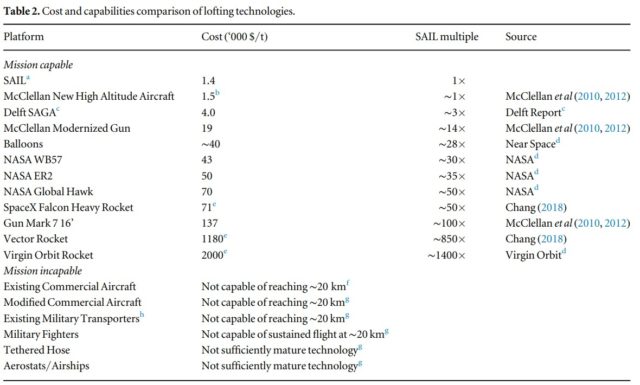While cheap, such an aircraft-based program would unlikely be a secret

Abstract:
We review the capabilities and costs of various lofting methods intended to deliver sulfates into the lower stratosphere. We lay out a future solar geoengineering deployment scenario of halving the increase in anthropogenic radiative forcing beginning 15 years hence, by deploying material to altitudes as high as ∼20 km. After surveying an exhaustive list of potential deployment techniques, we settle upon an aircraft-based delivery system. Unlike the one prior comprehensive study on the topic (McClellan et al 2012 Environ. Res. Lett. 7 034019), we conclude that no existing aircraft design—even with extensive modifications—can reasonably fulfill this mission. However, we also conclude that developing a new, purpose-built high-altitude tanker with substantial payload capabilities would neither be technologically difficult nor prohibitively expensive. We calculate early-year costs of ∼$1500 ton-1 of material deployed, resulting in average costs of ∼$2.25 billion yr-1 over the first 15 years of deployment. We further calculate the number of flights at ∼4000 in year one, linearly increasing by ∼4000 yr-1. We conclude by arguing that, while cheap, such an aircraft-based program would unlikely be a secret, given the need for thousands of flights annually by airliner-sized aircraft operating from an international array of bases.
Full text: “Stratospheric aerosol injection tactics and costs in the first 15 years of deployment” (published: 23 November 2018)
Citation:
Smith, Wake and Gernot Wagner. “Stratospheric aerosol injection tactics and costs in the first 15 years of deployment.” Environmental Research Letters 13 (2018) 124001. doi:10.1088/1748-9326/aae98d